Some may remember that back in the 1980s power windows were regarded as a luxury item in an automobile. Others may remember that in those very years we were imagining the automobile of the early 2000s as something spectacular and Star Trek like. It turns out that the automobile has evolved and matured into a rather safer, more comfortable and more reliable technology. But what will it be like in the near future? Laser guided navigation, talking cars, truly automated driving, holograms and in-vehicle broadband internet are just a few of the answers to that question.
True Autopilot
For many years creative minds have dreamed about a world where vehicles can drive autonomously without human interaction. We see them in science-fiction movies or we read about them in books. It seems like these ideas are closer to coming true as one car manufacturer after another have been making considerable progress in this field. And like in many other cutting edge technologies, Nissan and Toyota are the closest to demonstrate cars equipped with complex systems that can successfully drive a car in real traffic conditions such as school areas, fast highways or single lane roads.
Where can we see it in action: Certainly the most interesting concept in this field would be the mini robot-car Nissan Eporo which aside from sophisticated laser systems used to establish distances between itself and possible obstacles, also allows a group of Eporos driving together on the same road to effectively communicate with each other in order to establish the most efficient way to travel together.
Time frame: Modern cars can steer, brake and accelerate all by themselves, but they still need a human driver behind the wheel. While technologies that allow cars to be more and more autonomous are maturing every year the way to a fully automated vehicle that can safely transport people without their intervention is a long evolutionary path, so we won’t be expecting true autopilot cars at our local dealership for another ten to twenty years.
The Smart Key

Apparently there will be a future where car owners will be able to perform contactless payments for day by day transactions like general shopping, paying for gas, parking and road tolls or even groceries, doing away with the need to carry cash and extra cards. It might even be equipped with technologies like voice print and hand print recognition.
Where can we see it in action: It looks like transforming the car key into a futuristic gadget idea belongs to BMW and it’s been under tests since 2008. Ford has been working on its own intelligent car key, although it’s more safety oriented, as it allows the main owner to program it to limit the car to a certain speed when someone else is driving it.
Time frame: There has been no actual release on when and if the BMW technology will be implemented on mass production vehicles as it requires large infrastructure improvements, however it might be a thing we can realistically expect within the next few years.
Electric Window Tinting

Electric window tinting could take windows or a moon roof from clear to tinted to even opaque with the push of a button. It sounds pretty simple but it’s in fact a pretty advanced and expensive technology to implement.
Where can we see it in action: This innovation is actually a current item on the road as we speak, although it’s only been developed for one model, the all-luxury Maybach, a car that has a base price of $344,000.
Time frame: Many other luxury car manufacturers have announced their intention to equip their vehicles with this gadget, so we’re expecting to see more instantly opaque windows on the road in a matter of a couple of years.
Holographic Heads-Up Displays

In the last few years, head-up displays (HUDs) have started appearing in quite a few high-end vehicles. But an evolution of the technology behind it allows for a more compact kind of device, small enough to fit inside a rearview mirror so we expect this kind of display to be widely spread in the future. What it actually does for you is display your speed or distance between other vehicles or obstacles around you in real time, superimposing it over the actual road view depicted in the mirror, with computer powered accuracy, helping a great deal with safety issues caused by miscalculations of such distances.
Where can we see it in action: UK based Light Blue Optics is the designer of the prototype and it looks like they’re planning big.
Time frame: Light Blue Optics is in discussions with several major manufacturers about implementing their design on a larger scale, however, they do estimate that it will take at least four years before the concept is ready for the market.
Talking Cars

Bring out the old leather jacket, Knight Rider nostalgics. ‘Talking’ cars are a thing of the near future and not only they will communicate with us KITT style, but they are also expected to reduce road fatalities by half. That goal is achievable not only because our car’s computer will vocalize its safety concerns, but they will also be able to communicate with each other, via a complex Wi-Fi and GPS system which allows your vehicle to gather data from surrounding cars, which in turn receive the same type of information. The more nodes in the network, the better and more accurate the system gets. And you, the driver, will simply get advice from your car’s pleasant voice on how to approach an upcoming tight corner or how fast you should go for the next 10 miles.
Where can we see it in action: Cohda wireless is the Australian project that designed the system in the first place and they have apparently conducted road tests over a period of two years, using 200 to 700 cars in their network. So if you happen to see two cars politely whispering to each other on the roads of South Australia, don’t be scared, it’s just the future.
Time frame: The supporting devices behind this innovation are technically already market tested and with the system successfully passing road tests, it is expected to run of regular vehicles in 2012, starting with the United States. No talk yet about a front scan bar with red flashing lights.
The .car Concept

Bringing the Internet to your car is not exactly a breakthrough invention anymore, but checking your Facebook page while doing 70 mph is not exactly safe and it’s contrary to all possible road safety rules. So the inventors of the .car concept will want to bring the power of broadband internet to your vehicle, in a whole new unique and custom experience. This will surely create a whole new industry standard. As the .car top level domain name will be slowly implemented, special website designs, input methods, display modalities, custom designed firewalls and a ton of safety issues are being taking into consideration.
Where can we see it in action: With makers like GM, BMW and most of the reputed Japanese companies already bringing Internet access in one form or another to their vehicles, this technology is already half way into the mainstream market, but there are issues are still to be resolved.
Time frame: A truly unique .car style web navigation is yet to be a mature concept, but specialized companies have been working on the specifics for several years now and they expect this to be a common thing for the coveted next-generation buyers.
Self-Parking Cars

We’re guessing that most people have been involved in a little parking-lot fender bender accident before. Though many manufacturers in today’s world equip their vehicles with rearview cameras, parking sensors and even computer generated projections of surrounding obstacles people still manage to scrape, ding and dent their way into parking spaces. Well, there is actually a technology that allows cars to park on their own, while drivers just pull next to the spot and then sit back and get parked with their feet off the pedals.
Where can we see it in action: Currently the Lexus LS 460 L is the only mass production vehicle that offers this technology at this level, so lucky buyers may opt for it.
Time frame: Although what we have now is a good enough example of an intelligent self-parking car, it is estimated that the perfection of this technology will be reached in 2018
Games Console Which Allows You ‘Race Yourself’

This is actually an amazingly entertaining advancement in the gaming/car technology which basically allows you to measure and record your lap times on a track, then unplug the memory card, insert it into your gaming console and pretty much race against yourself. Chances are you’ll always win the virtual races, but that’s how great champions are made.
Where can we see it in action: The ready-for-production Toyota FT-86 concept is actually offering this gadget as an after-market optional package and a lot of people tested it at the Tokyo Salon. You will be able to do this too, provided you own a Play Station 3 and a copy of Gran Turismo 5.
Time frame: The final production model will be launched close to the end of 2011, but it hasn’t yet been confirmed that this is still definite equipment for the mass-production series. We can only hope.
Brain-Monitoring Technology

The emerging field of neurotechnology might not seem to have many useful applications to the automobile industry, but according to recent reports, it could be an important step in improving road safety, especially for the elderly. This system consists of networks of sensors that can control temperature to keep the driver alert or sense if the driver is hitting the gas pedal for no apparent reason.
Where can we see it in action: Since late 2007, Toyota has been working with the developer of Nintendo’s Brain Age games on a program specifically focused on senior drivers with results in temperature control, anti-lock system sensitivity, gas pedal locking and other intelligent systems that can prevent any overly eager, but distracted driver from making a wrong decision.
Time frame: A final decision on the specific date of implementation is yet to be announced, but sources say that this project will go on road-testing within the next 5 years.
Transparent Trucks

In reality this is a system of cameras and projection screens that allows the driver behind a semi-truck to see what’s on the other side, eliminating accidents caused by cars trying to pass trucks when there’s actually upcoming traffic. The idea is pretty simple: capture screen in the front, projection screen in the back of the semi.
Where can we see it in action: This has actually been developed by a Russian design studio and it was presented as more or less of a promotional material, offered purely as a conceptual take on future road safety.
Time frame: Being prohibitively expensive at the moment, though in essence a great idea, this project will not see the light of day until projection technology improves to the point where it’s cheaper to build and more efficient during bright daylight. On the other hand, that might not take all that long.
Airless Tires

Could we re-invent the original car tire that has evolved over the last 100 years into what we use today? Apparently airless tires could be a safer choice and there have been reports on real road conditions tests with them. They are said to offer five times better handling response than traditional pneumatic tires and of course, they can’t really get a flat. On the downside, they appear to be quite noisy and you can’t mount them on your custom chrome plated rims.
Where can we see it in action: This has been a Michelin idea all the way and they call it The Tweel. Most Segways today use the very same concept.
Time frame: Although a viable idea even today, there is no way to know for sure if the automotive industry is going to change the way they think of car tires until further testing and researching improves what the airless tire has to offer.
The Smart Stop

Many times you’ll go through an intersection after the light has already been yellow for a little too long, but you either don’t notice or simply don’t want to slam on the brakes to stop your vehicle. The concept of Smart Stop will prevent that from happening by actually forcing the car to a full stop while your foot is still on the gas pedal. For those of us who still don’t care, it will probably have a deactivate option. This system actually works in conjunction with compatible traffic lights that send a signal to you car’s wireless receiver.
Where can we see it in action: Mercedes-Benz is currently experimenting with this very scenario and they are very optimistic about their system being a common safety equipment in the future.
Time frame: Apart from a few trial installations, it could be ten years or more before the technology is standardized and available in the U.S. because it would have to be a system that incorporates intelligent stoplights as well and there is currently no available infrastructure for that.
Better Than a DeLorean

If a rerun of Back to the Future still takes your breath away, be prepared to reach for the oxygen tanks. Today’s driver can step in and out of their favorite ride through a totally new type of entryway, which is even more eye-catching than the DeLorean’s futuristic bat-wings. Would you believe completely disappearing car doors? Bet you never even thought of that one!
Not only are these completely retractable doors, the inventors, JATECH LLC, can equip any car with these futuristic entry devices, or include them in a custom-made vehicle just for you.
Looking for a Little Company?
Although it doesn’t quite carry-on enough of a conversation to qualify you for the HOV lane, this new warning system can detect other vehicles, and provide drivers with an audible warning if an accident is likely to happen. Radar systems are available today with similar capabilities, but they are more expensive and less dependable than WiFi-enabled warnings. This piece of equipment could be as standard as anti-lock brakes by 2013.
Electric Muscle Car: Oxymoron, or Wave of the Future?
To translate mere electricity into power that’s on par with the traditional Dodge HEMI V-8 engine, the ZEO’s designers created an advanced propulsion system, which feeds 268 horses directly to the rear wheels via a 200 KW motor. This requires a massive, 64 KW-hour battery pack; but it was placed strategically within the ZEO to create a low center of gravity for the curve-hugging performance, for which these cars are known.
You’ll Never fit in That Space
With Tata Pixel, tight parking spaces are no longer a problem. In fact, this tiny car has an amazing turning radius of 8.5 feet, shorter than its overall length of 10 feet. For the tightest turns possible, this rear-wheel-drive miniature has unpowered front wheels, capable of turning to a near-90 degree angle, and rear wheels that can do the same –in the opposite direction.
If your zero-turn mower is the envy of the neighborhood, your friends will be equally jealous of your ride when you park this baby in the driveway. Additional features include an amazingly low price, touch-screen controls, and way-cool, insect-wing doors.
Information Overload
If you need to know it ALL, your time is coming. With the ecoRoute HD software, your Nuvi navigational system can connect to any vehicle’s onboard-diagnostic (OBD II) port to calculate fuel costs, to report your carbon footprint.
New Smart Car technology keeps you in touch with both your car and the world, with the following Internet-enabled features:
- - Use a smartphone to monitor your vehicle from any location.
- - Use text-to-speech technology to read RSS feeds received en route.
- - Get the latest information on restaurants, including discounts and reviews.
- - Real-time commuting routes to avoid accidents, congestion, and other delays.
Leave it to Google
While Sci-Fi movies like Total Recall, Demolition Man, and Men in Black have all featured variations of the self-driving car, leave it to Google to actually make it happen. Although there’s no robotic driver like Johnny Cab in these units, these vehicles are perfectly capable of driving through very real streets with or without passengers.
The next time you’re in California; don’t bother doing a double-take when you see an unmanned car stuck in traffic right next to you. As of October, 2010, these Google-mobiles had logged more than 140,000 miles zipping around San Francisco, Lake Tahoe, and Santa Monica.
The Blind Driving the Blind?
Someone should tell the kids at Virginia Tech that Google already has a self-driving car, a seemingly perfect solution for anyone who is vision-challenged. Those ambitious future engineers couldn’t pass up a chance to win the Blind Driver Challenge tossed out by the Jernigan Institute, part of the National Federation of the Blind.
To beat this dare from 2004, VA Tech’s Robotics and Mechanics Lab turned a dune buggy into an eyesight-optional vehicle, combining a complicated array of monitors, lasers, and voice recognition software, in addition to a vibrating vest. Although it hasn’t been tested on the open road, blind drivers successfully maneuvered a closed course by applying the gas, brakes, and steering, according to prompts offered by the cars navigation system.
The Jetson’s Comes to Life
Even before the Jetson’s hit the small screen, drivers stuck in traffic jams fantasized about flying cars, which would rescue them from overwhelming traffic. To satisfy this need, NASA has funded a $2 million competition to motivate ambitious innovators in their efforts to create a feasible PAV, or personal air vehicle.
While most models look like rudimentary planes with wheels, or fold-up toys, the PAL-V, personal air & land vehicle actually looks promising. It is one of the few prototypes that is fully functional on land and in the air. So far, the wedge shape is more reminiscent of a motorcycle than a passenger car, but it’s a great starting place.
Kanak Gogoi.
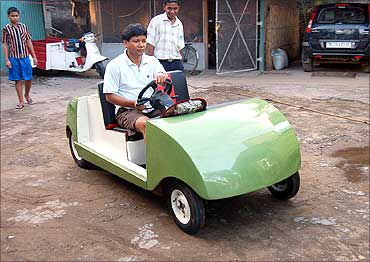
You can zoom, at a maximum speed of 120 kmph, in his car that runs on compressed air!
You can also ride a cycle without pedalling or drive a solar-gas hybrid car...all you have to do is visit a small garage in Assam.
Kanak Gogoi, a modest innovator who has studied only up to class X, has spent years making these futuristic vehicles.
A low-cost flying machine, which can carry people, is Gogoi's dream now. The self-taught innovator is confident that it won't be long before this dream too comes true.
As a boy, he had to bunk classes and go into hiding to build on his innovative ideas. His first innovation was an air gun which he made at the age of 10. The trigger for this serial innovator was a real gun at his uncle's place. The gun fascinated him. But when he tried to hold it one day, he was thrashed soundly. So he made up his mind to make a gun and, did it.
The zeal to innovate grew as he went on to develop a range of exceptional vehicles -- a 'gravity-operated' cycle, Trygo X (a three-wheeler), Kanso hybrid car, a compressed air car and a metal speed breaker that can produce electricity .
Parking assists
Where would we be today without the ever faithful parking sensors in the back? When it was first introduced, these sensors were godsend to those who had a problem in judging distances and made parallel parking a breeze. The most sophisticated parking systems today don't just include a barrage of sensors – they come with cameras and radar detection. Some even will do the job of parking the car for you!
Daytime Running Lights (DRL)
It was a new ruling in Europe Union, and it sparked off a huge trend in Singapore. DRL's are forward-facing lights that are automatically activated when the vehicle is moving. Premium marques or higher-spec'ed cars come with factory LED-equipped DRL systems that emit a bright white light. Since its introduction here, sales for aftermarket DRL kits have taken off too. They work well to varying extent, with results from attention-grabbing to blindingly-annoying.
Keyless entry
As it's name suggests, it allows you to enter a car and drive off without having to fumble for the key. The car senses for the presence of a “smart” key fob near it, and only unlocks the doors when you reach for the door handles. Locking is achieved with a slide of a finger on the handles. You can do so much more now with the key fob today, such as starting the engine, opening the boot-lid, windows or even lowering the roof.
Radar technology
The police have used it for years to bust speeding drivers, but the same technology has been adapted to make the task of driving easier. Radar technology has already been applied in reverse sensors, but as you go higher up the price chart, you'll find that radar sensors are located in almost all corners of the car, including mirrors so that they can feed information to a blind spot detection system. Even more advanced radar systems can be found in adaptive cruise controls, to make sure there is a safe distance between you and the car in front. They also automatically apply the brakes when it detects an impending collision.
Direct Injection engines
This new breed of engines sprays fuel directly into the combustion chamber instead of injecting it through the air intake port. Compared to the previous method of port injection, direct injection engines burn fuel more cleanly. With more power, you get tighter emission controls and improved fuel efficiency. It's perfect for the current sky-rocketing fuel prices and to meet stricter emissions legislations.
By Kelvin Low
Our cars are faster, smarter and most importantly, safer, thanks to these 10 innovations.
Anti-lock Braking System (ABS)
Found in almost all but the cheapest cars, ABS is a simple “anti-lock” system that gives drivers the capability to steer around danger under hard braking by preventing the wheels from locking up. The modern evolution of the ABS sees it being paired up with Electronic Brakeforce Distribution (EBD), a system which can vary the amount of braking force applied to each wheel.
Electronic Stability Program (ESP)
Once reserved for the upper price bracket, ESP technology has been slowly trickling down to the mid-class segment. Fitted with sensors that monitor the car's behaviour, an ESP-equipped car is able to minimize the loss of control in slippery situations. ESP works in unison with several systems which include ABS and traction control.
Entertainment systems
There was once a time when the only entertainment on the road was a basic cassette player and/or a radio. Today's entertainment systems go beyond music, playing video and audio files from a plethora of sources such as USB drives and mobile phones. Some of the latest factory audio systems even include GPS navigation with real-time traffic updates. If you are fortunate to waft through life from the back seat, internet connectivity comes standard with the system.
Our cars are faster, smarter and most importantly, safer, thanks to these 10 innovations.
Anti-lock Braking System (ABS)
Found in almost all but the cheapest cars, ABS is a simple “anti-lock” system that gives drivers the capability to steer around danger under hard braking by preventing the wheels from locking up. The modern evolution of the ABS sees it being paired up with Electronic Brakeforce Distribution (EBD), a system which can vary the amount of braking force applied to each wheel.
Electronic Stability Program (ESP)
Once reserved for the upper price bracket, ESP technology has been slowly trickling down to the mid-class segment. Fitted with sensors that monitor the car's behaviour, an ESP-equipped car is able to minimize the loss of control in slippery situations. ESP works in unison with several systems which include ABS and traction control.
Entertainment systems
There was once a time when the only entertainment on the road was a basic cassette player and/or a radio. Today's entertainment systems go beyond music, playing video and audio files from a plethora of sources such as USB drives and mobile phones. Some of the latest factory audio systems even include GPS navigation with real-time traffic updates. If you are fortunate to waft through life from the back seat, internet connectivity comes standard with the system.
Parking assists
Where would we be today without the ever faithful parking sensors in the back? When it was first introduced, these sensors were godsend to those who had a problem in judging distances and made parallel parking a breeze. The most sophisticated parking systems today don't just include a barrage of sensors – they come with cameras and radar detection. Some even will do the job of parking the car for you!
Daytime Running Lights (DRL)
It was a new ruling in Europe Union, and it sparked off a huge trend in Singapore. DRL's are forward-facing lights that are automatically activated when the vehicle is moving. Premium marques or higher-spec'ed cars come with factory LED-equipped DRL systems that emit a bright white light. Since its introduction here, sales for aftermarket DRL kits have taken off too. They work well to varying extent, with results from attention-grabbing to blindingly-annoying.
Keyless entry
As it's name suggests, it allows you to enter a car and drive off without having to fumble for the key. The car senses for the presence of a “smart” key fob near it, and only unlocks the doors when you reach for the door handles. Locking is achieved with a slide of a finger on the handles. You can do so much more now with the key fob today, such as starting the engine, opening the boot-lid, windows or even lowering the roof.
Radar technology
The police have used it for years to bust speeding drivers, but the same technology has been adapted to make the task of driving easier. Radar technology has already been applied in reverse sensors, but as you go higher up the price chart, you'll find that radar sensors are located in almost all corners of the car, including mirrors so that they can feed information to a blind spot detection system. Even more advanced radar systems can be found in adaptive cruise controls, to make sure there is a safe distance between you and the car in front. They also automatically apply the brakes when it detects an impending collision.
Direct Injection engines
This new breed of engines sprays fuel directly into the combustion chamber instead of injecting it through the air intake port. Compared to the previous method of port injection, direct injection engines burn fuel more cleanly. With more power, you get tighter emission controls and improved fuel efficiency. It's perfect for the current sky-rocketing fuel prices and to meet stricter emissions legislations.
Forced induction engines
Once limited to exotic supercars of lore, forced induction technology is the signature of owning a highly-tuned car, and has gained widespread use in many cars today. Carried out by means of turbochargers, superchargers, or a combination of both to force more air in, forced induction engines can produce similar levels of power as a traditional engine of a larger capacity, at the same time, keeping the emissions in check.
Once limited to exotic supercars of lore, forced induction technology is the signature of owning a highly-tuned car, and has gained widespread use in many cars today. Carried out by means of turbochargers, superchargers, or a combination of both to force more air in, forced induction engines can produce similar levels of power as a traditional engine of a larger capacity, at the same time, keeping the emissions in check.
Start-Stop technology
A start-stop system is designed to cut the time that an engine spends idling as much as possible, to save fuel. Perfect – if you're often caught at the traffic lights or stuck in jams. First seen in petrol-electric hybrid vehicles, it has seen an increasing application in normal petrol vehicles. Don't think that one can achieve the same results by manual intervention – stuff which traditionally runs off the engine such as air conditioners won't work. A start-stop equipped car can continue to operate as normal, thanks to an electric motor.
A start-stop system is designed to cut the time that an engine spends idling as much as possible, to save fuel. Perfect – if you're often caught at the traffic lights or stuck in jams. First seen in petrol-electric hybrid vehicles, it has seen an increasing application in normal petrol vehicles. Don't think that one can achieve the same results by manual intervention – stuff which traditionally runs off the engine such as air conditioners won't work. A start-stop equipped car can continue to operate as normal, thanks to an electric motor.
















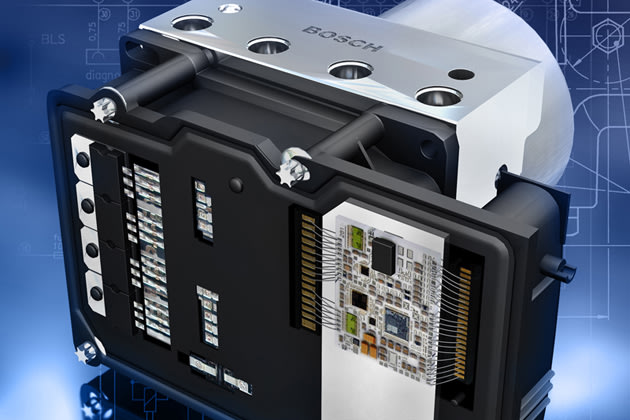
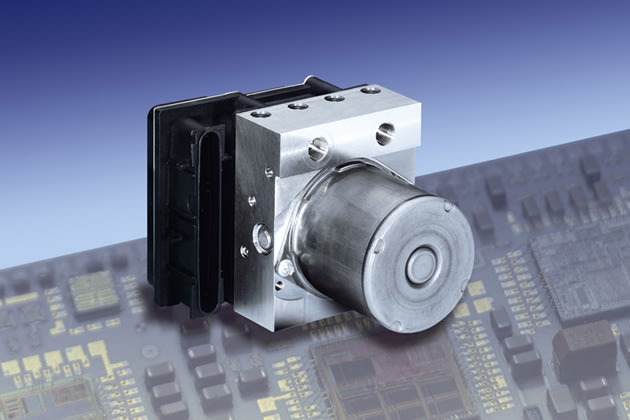
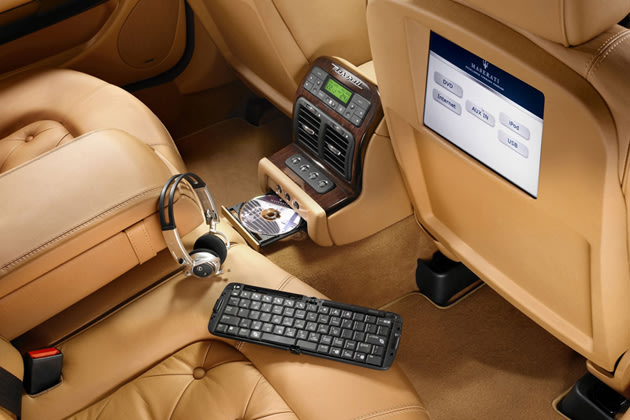


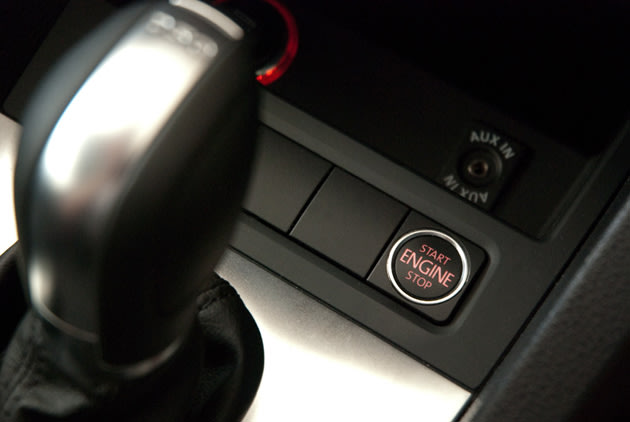
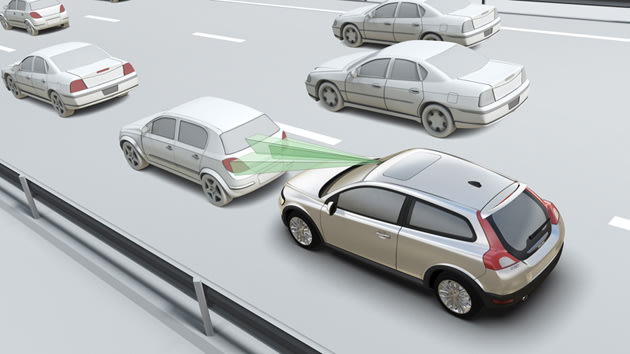
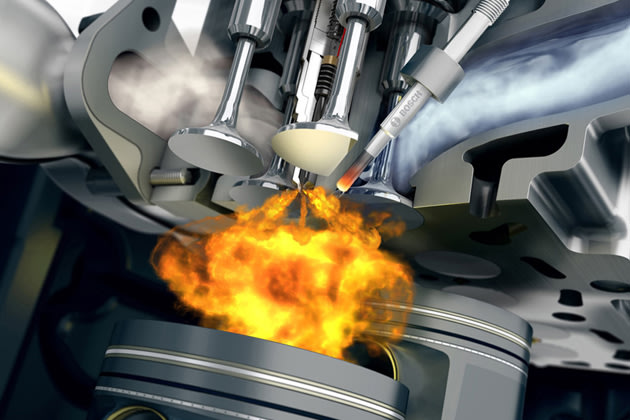


0 comments:
Post a Comment